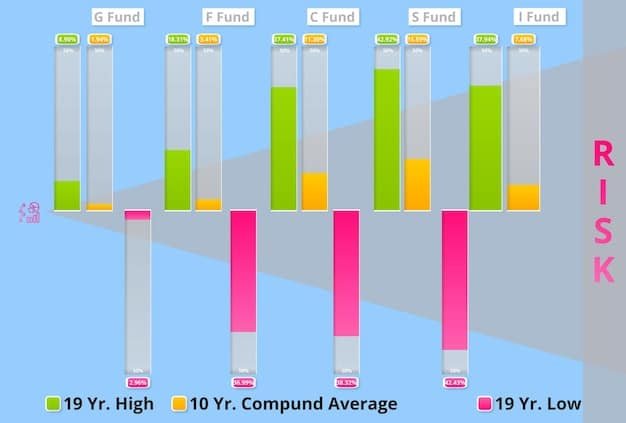Debt Avalanche vs. Snowball: Which Saves More Money in 2025?

The debt avalanche and debt snowball methods are two popular strategies for tackling debt, but in 2025, the debt avalanche method, which prioritizes debts with the highest interest rates, is generally the more cost-effective approach, potentially saving you more money than the debt snowball method.
Choosing a debt repayment strategy can be overwhelming. When comparing the debt avalanche vs. debt snowball: which strategy saves you more money in 2025? A data-driven comparison will help you decide.
Understanding the Debt Avalanche Method
The debt avalanche method focuses on paying off debt strategically, prioritizing those with the highest interest rates. This approach helps minimize the total interest paid over time.
How the Debt Avalanche Works
The debt avalanche method is a systematic way to tackle debts. It involves identifying all your debts, listing them with their interest rates, and focusing on the one with the highest rate first.
- List your debts: Include credit cards, loans, and any other outstanding balances.
- Identify interest rates: Note the APR for each debt.
- Prioritize high-interest debt: Pay the minimum on all debts, then allocate any extra funds to the debt with the highest interest rate.
The idea is that by aggressively paying down high-interest debts first, you prevent interest from accumulating rapidly, which, over time, can save you a significant amount of money.
By prioritizing debts with the highest interest rates, the debt avalanche method can lead to quicker debt freedom and substantial savings. This analytical approach is favored by those who are mathematically inclined and motivated by long-term financial gains.

Exploring the Debt Snowball Method
The debt snowball method is a debt reduction strategy where you pay off the smallest debts first, regardless of their interest rate. This method is designed to provide quick wins, boosting morale and motivation.
How the Debt Snowball Works
With the debt snowball method, the focus is on psychological wins. To start, you organize your debts from the smallest balance to the largest, irrespective of interest rates.
- List debts by balance: Order from smallest to largest.
- Pay minimums on all: Ensure all debts are current.
- Attack the smallest debt: Put all extra funds towards eliminating the smallest balance.
As each small debt is paid off, the funds that were going towards that debt are then “snowballed” into the next smallest debt. This creates momentum and gives a sense of accomplishment with each debt eliminated.
While the debt snowball method may not be the most mathematically efficient, its psychological benefits can be powerful, making it a great option for those who struggle with motivation and need to see immediate results.
Data-Driven Comparison for 2025
To determine which method saves more money in 2025, let’s examine a data-driven comparison between the debt avalanche and debt snowball strategies. The results may surprise you.
Interest Savings: Avalanche vs. Snowball
When comparing the two methods in terms of interest saved, the debt avalanche typically comes out on top. This is because targeting debts with the highest interest rates minimizes the overall interest paid.
For example, consider a scenario with three debts:
- Credit card: $5,000 balance, 18% APR
- Personal loan: $10,000 balance, 10% APR
- Student loan: $15,000 balance, 6% APR
Using the debt avalanche, you would prioritize the 18% APR credit card. Over time, you would save significantly compared to targeting the smaller debts first, as the snowball method suggests.
Time to Debt Freedom: A Realistic View
While the debt avalanche often saves more on interest, the debt snowball can sometimes lead to faster debt freedom, especially if the smaller debts are quick to eliminate. However, this is usually only true when the interest rate differences between the debts are negligible.
For most people, the long-term savings from the avalanche method outweigh any potential short-term gains from the snowball method. By focusing on high-interest debts, you reduce the principal faster, accelerating your path to becoming debt-free.
Real-World Scenarios and Case Studies
To illustrate the effectiveness of each method, let’s explore a few real-world scenarios. These case studies will provide insights into how both the debt avalanche and snowball methods can be applied.
Case Study 1: The High-Interest Burden
Sarah has a credit card with an $8,000 balance and an 18% APR, a personal loan of $5,000 at 12%, and a student loan of $12,000 at 6%. Using the debt avalanche, she tackles the credit card first, saving thousands in interest compared to the snowball method.
Sarah’s diligent application of the avalanche method not only saved her money but also shortened her debt repayment timeline. By prioritizing the high-interest credit card, she reduced her overall debt burden more quickly.
Case Study 2: The Motivation Boost
Mark has several small debts totaling $3,000 and a larger debt of $18,000 at a moderate interest rate. He chooses the debt snowball to eliminate the smaller debts quickly. He gets a psychological boost from each victory, motivating him to tackle the larger debt.
Mark found that the early successes with the debt snowball kept him engaged and committed to his debt repayment plan. This psychological boost was critical for him to stay on track and eventually eliminate all his debts.
Psychological vs. Mathematical Advantages
Understanding the psychological and mathematical advantages of each method is crucial in selecting the right one. Both strategies have their unique benefits, catering to different personality types and financial situations.
The Power of Small Wins
The debt snowball method capitalizes on the “small wins” effect. These early victories can provide a significant psychological boost, making the overall debt repayment journey less daunting.
- Increased motivation: Seeing quick progress keeps you engaged.
- Improved consistency: Small wins reinforce good habits.
- Reduced stress: Eliminating debts offers a sense of control.
For individuals who struggle with sticking to long-term plans, the debt snowball can be incredibly effective. This method provides the immediate gratification needed to stay motivated.
The Logic of Long-Term Savings
The debt avalanche method appeals to those who are motivated by logic and long-term financial savings. This approach focuses on minimizing the total interest paid, which can lead to substantial savings over time.
- Optimal financial strategy: Reduces overall interest.
- Accelerated debt freedom: Targets high-impact debts.
- Data-driven approach: Suits analytical individuals.
By tackling high-interest debts first, individuals using the debt avalanche method can save thousands of dollars. This strategy is perfect for those who are financially savvy and committed to achieving the best possible outcome.
Making the Right Choice for You
Choosing between the debt avalanche and snowball methods depends on your financial situation, personality, and motivation. Consider what matters most to you when making your decision.
Key Factors to Consider
Before deciding on a debt repayment strategy, evaluate these key factors:
- Financial situation: Assess your debts, income, and expenses.
- Personal motivation: Determine what keeps you engaged.
- Long-term goals: Consider your overall financial objectives.
Ultimately, the best debt repayment strategy is the one you can consistently follow. Whether it’s the psychological boost of the snowball or the financial efficiency of the avalanche, choose the method aligned with your needs.
By carefully considering these factors, you can choose a debt repayment strategy that not only saves you money but also aligns with your personal preferences and motivations, setting you up for long-term financial success.
| Key Aspect | Brief Description |
|---|---|
| 💰 Avalanche Method | Prioritizes debts with the highest interest rates to minimize overall interest paid. |
| ❄️ Snowball Method | Focuses on paying off the smallest debts first for quick psychological wins. |
| 📊 Interest Savings | Avalanche typically saves more in interest, while snowball can offer faster debt freedom in some cases. |
| 🧠 Psychological Impact | Snowball provides motivation through small wins, while avalanche suits those driven by logic. |
Retractable FAQs
The debt avalanche method involves paying off debts with the highest interest rates first. It’s a strategic approach to minimize overall interest paid.
The debt snowball method focuses on paying off the smallest debts first, regardless of their interest rates. It’s designed to provide quick wins and boost motivation.
Typically, the debt avalanche method saves more money in the long run because it targets high-interest debts, reducing the overall interest paid.
The debt snowball method provides psychological wins by quickly eliminating smaller debts, boosting motivation and increasing consistency in debt repayment.
Consider your financial situation, personal motivation, and long-term goals. Choose the method that aligns with your needs and that you can consistently follow.
Conclusion
In the end, both the debt avalanche and debt snowball methods are effective strategies for tackling debt. The best choice depends on your individual financial situation and personal preferences. Consider prioritizing the debt avalanche for potential financial savings, but don’t discount the motivational boost that debt snowball might offer.





